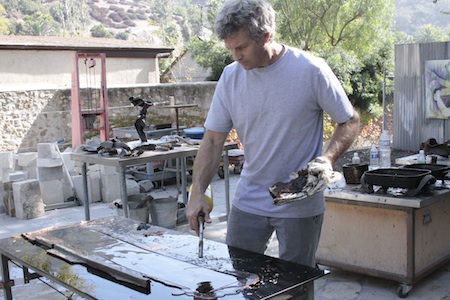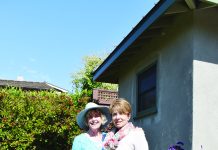
Concerns over a burst of development projects in Laguna Canyon prompted the City Council on Tuesday to suggest a temporary halt to new projects until apparent zoning discrepancies can be ironed out and a cohesive plan mapped out.
The Council asked city staff to investigate a development moratorium by June and suggested that the scope of the soon-to-hired urban design firm, initially limited to evaluating the downtown specific plan, be expanded to include, and even prioritize, an analysis of canyon development.
Despite repeated calls for a cohesive canyon development policy during public hearings in recent months, only nine people took advantage of Tuesday’s hearing to voice their opinion.
Nearly 200 people thronged the Council chambers two weeks ago to weigh in on a proposed homeless housing project in the canyon, and many decried the city’s piecemeal approval of single projects without regard to the cumulative effects. Council member Steve Dicterow vowed then to hold a discussion on the issue at the May 6 meeting.
Concerns over the direction of canyon development prompted the formation of a canyon-wide homeowners group, Canyon Alliance Neighborhoods Defense Organization, or CANDO, and they, too, called for a moratorium on canyon development. The Laguna Canyon Property Owners Association found common ground with residents from Castle Rock, Raquel Road, Stan Oaks Lane and Canyon Acres to form the new coalition.
Even so, looking out on the sparsely filled seats this week, Dicterow said he was disappointed that “the people most vocal about development in the canyon aren’t here tonight.”
With so many projects in the canyon, from the artists’ work/live project, which first spurred the outrage of canyon residents, to a proposed storage facility, the homeless housing and LCAD expansion, “if I lived out there, I’d feel like we were under attack,” Dicterow said.
Taking the floor after principal planner Scott Drapkin’s overview of the canyon’s current zoning, comprised of three specific plans (for downtown, Sarah Thurston Park, and the Laguna Canyon annexation area) and nine zoning districts, public speakers lacked earlier passion for an overarching plan. To wit, John Hamil, vice president of the Laguna Canyon Property Owners Association and an early advocate for a moratorium, said the turnout flagged “because they don’t think it makes a difference…there’s no point in doing this if we can’t reasonably interpret things.”
John Albritton, the association’s president, questioned the need to revisit zoning when they just wanted “implementation of our annexation’s specific plan.”
Pointing out that the artist work-live project revealed the plan’s vulnerability to different interpretations, Mayor Pro Tem Bob Whalen asked whether Albritton could suggest clarifications.
Albritton said they only wanted to reduce large-scale projects and “maintain the rural scale we’ve had for 25 years.”
While others offered further angry comments on damage done without suggesting a path forward, a few took the bait to engage in the process.
“You’re killing your own town and you don’t even know it,” said Carl Klass.
“If we’re not going to follow the rules we have, there’s no point in making new rules,” said Audrey Prosser.
Penny Milne, a member of the CANDO coalition, took another tack, noting that almost every project listed under the purview of the city’s recently established Urban Planning Coordinating Committee “seems to concern us.” She urged involving the group in the planning process, perhaps in an advisory role. “Suggest for us practical next steps to get engagement,” she said.
Dicterow insisted that the current “hodge-podge of zoning” cried out for a more effective plan in order to preserve the small-scale canyon residents favor. Until resolved, he called for a moratorium on canyon development projects.
Council member Toni Iseman proposed that once the city selects an urban planner, they should include canyon development in their scope of work and have them start in the canyon, “because that’s where the urgency is.”
Mayor Pro Tem Bob Whalen agreed that canyon development should be filtered through the urban design firm, which will have a mandate to engage the community and incorporate their input.
He suggested that “the logical planning sequence is from El Toro Road into the downtown,” and predicted urban planners will advise that rural open space ease into small-scale development and gradually intensify closer to town.
“I understand your frustration,” said Whalen, addressing the canyon residents, “but if you’re going to be productive in this process, coming and just getting angry with us isn’t going to get you what you want. You really need to come and give us input about what you think is best.”




